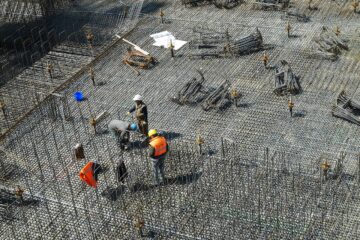![]()
Introduction:
The Securities Contracts (Regulation) Act, 1956 defines stock market/ stock exchange. The two major stock exchanges of Indian Stock Market are BSE (Bombay Stock Exchange), it has been in operation since 1875 and the other one is NSE (National Stock Exchange), formed in 1992 and began its trading in 1994.
Since the establishment of these markets, on one hand, India has seen tremendous returns to the investors, on the other hand, witnessed a storm of malpractices (scams). One such scam which hit the stock market in 1992 is Harshad Mehta scam.
Position of Banks in 1990s
In the 1990s banks in India were struggling to make meaningful profits. This is because there were other competitive products in the market that provided better returns to investors, such as money market funds and portfolio management services pushing business away from banks. Consequently, there was a huge competition between banks for the additional cash which was under the Indian Corporate sector, especially the public sector oil and gas units. This rivalry and the need to gain an edge over rivals pushed the banks into the network of wicked-minded brokers such as Harshad Mehta.
Harshad Mehta
Harshad Mehta was born in an extreme poverty family then he migrated to Mumbai with just Rs.40 (less than $1). Then he entered BSE where he rose meteorically and became one of the most prominent and influential brokers. Later it was known that he choose an illegal path to gain money. So, in this article, we will see how a man with Rs.40 ended up having more than $8 billion.
1992 Scam
In Indian Stock Market, this was the biggest scam ever committed. And the mastermind behind this scam being the big bull Harshad Mehta. This scam took place between April 1991 and May 1992. In 1990s banks were not allowed to trade in the Equity Markets. Mehta knowing this fact and assuming this as a loophole started to invest in the equity market by seeking money from different banks and promising them with high interests. Getting the money in his personal account he purchased shares. And he also used “Ready Forward deal” where Mehta acted as a broker between two banks to sell the securities, in this process he kept the money with him and invested in the stock market. He used “Bank Receipts” as another instrument which confirms the sale of securities, in this scam. All this inflated and raised the index of the BSE Sensex. For example, in that period the stock (ACC Cement) raised from INR 200 to INR 9000.
Exposure of Scam
On 23 April 1992, Sucheta Dalal a journalist revealed in ‘The Times of India’ how Mehta was dipping into the banking system illegally to fund his purchases. Sucheta Dalal who also investigated the Ketan Parekh scam says that “You can only see in India that two scams which took place in a period of 10 years look so identical”.
Aftermath
The BSE (Bombay Stock Exchange) collapsed after the scam broke out. This scam led to the suicide of Vijaya Bank Chairman. In November 1992 investigation department took Mehta into the custody. And he was charged with 76 criminal cases relating to forgery, criminal conspiracy, cheating, bribery and falsification and 600 civil action suits. This problem rose to national level that it became essential for the institutes like the Reserve Bank of India (RBI), the Central Bureau of Investigation (CBI), Income Tax Department, the Directorate of Enforcement and the Joint Parliamentary Committees to get involved. In 1993 as Mehta coughed up the name of Indian Prime Minister Shri. P. V. Narsimha Rao as the beneficiary from corruption and threatened to expose several more names, this matter became even more complicated.
Case
Harshad S. Mehta and others vs The State of Maharashtra (M.H) –
Ashwin Mehta, his brother represented him and his family in the court and led the case. Some of the criminal cases against him were dropped. Then he was sentenced to 9 years of imprisonment and sent to Thane jail.
Death
When Mehta was under the custody in Thane prison he informed that he is having chest pain and was admitted in the hospital. While taking the treatment he died at the age of 47 on 31st December 2001. At the time of his death, 27 cases were pending against him.
Impact of the Scam
The immediate impact was the fall of share prices in the stock market and thereby a complete collapse of stock markets, both BSE & NSE and led the investors into the losses.
The government established a special court for this issue and enforced an ordinance/ law to deal with this scam with several punitive provisions. Section 3 and Section 4 of the above-passed ordinance attached to the property of all persons accused in this scam and also invalidated all the transactions that were passed from them after 31st march 1991.
Effect on the Market
The scam had an effect on the entire market as the securities system collapsed completely and the investors lost thousands of their invested money. The stock market index has dropped from 4500 to 2500 in the market capitalization and indicating the loss of Rs. 100,000 crores in the market. All the shares became worthless pieces of papers overnight since they cannot be delivered in the market.
This scam is not only the reason for the fall in the market. There are also other reasons, first was the tainted shares phenomenon which triggered the market hysteria and the second was the perceived slowing of the reforms process which ruined its very basis on which the boom was centred.
After the scam, the government’s liberalization policies were harshly criticized, with Harshad Mehta and others identified as the products of the policies. In response to the political challenges, pressures and bad publicity that the government has obtained during the scam liberalization policies had been delayed for a while. Implementation of the recommendations on the banking system by the Narsimham Committee had also postponed. Sanctioning of private sector mutual funds were postponed by the SEBI.
Many questions emerged in the matter of privatization as the Narsimham Committee head was sent to jail stating that he has involvement in the scam. Many Indian companies who planned the Euros-issues were delayed as the capacity of Indian companies to raise the capital on the world markets has been seriously compromised. It was said that it is important to remove artificial barriers between the money market and the stock market, between the corporate securities market and the government securities market and also between the formal money market and the informal money market.
Conclusion
Any frauds and scams don’t take place unless otherwise there are some greedy persons and persons knowing the loopholes in the system. Periodical checks by the RBI, SEBI and other concerned helps in building the loopholes and avoiding such scams in general but is it highly difficult to check the greediness at higher-ups.
References:
- https://economictimes.indiatimes.com/news/politics-and-nation/the-harshad-mehta-case-where-time-has-overtaken-justice-by-a-mile/articleshow/53052771.cms?from=mdr
- https://sciarena.com/storage/models/article/jOZJ5mmRakZ2Kt3OYoBC3iWhW4CZu2tCYUoAa6LoHR7wYMtciCt31yuPXvee/impact-of-securities-and-financial-scams-on-regulatory-framework.pdf
- https://economictranscript.wordpress.com/2017/02/07/the-story-of-a-scam-harshad-mehta-1992/
- https://www.managementstudyguide.com/harshad-mehta-scam.htm
- https://groww.in/blog/famous-scams-indian-stock-markets/
- https://indiankanoon.org/doc/729673/
- https://faculty.iima.ac.in/~jrvarma/papers/vik18-1.pdf



0 Comments